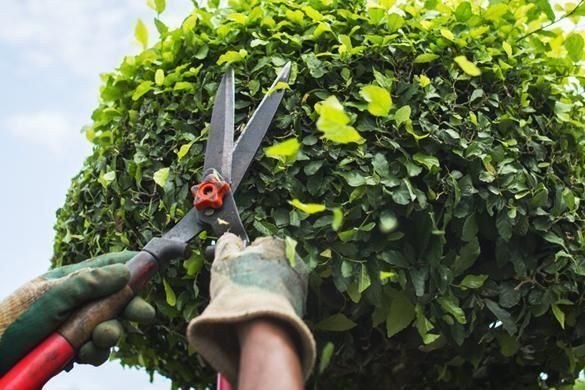
Crown Thinning and Contouring Services
Improving Tree Health Through Crown Thinning
Crown thinning is a precise and beneficial pruning technique that involves selectively removing branches within the crown of a tree to reduce density without altering its overall shape. This service improves air circulation, enhances light penetration, and reduces wind resistance, all of which are essential for the health and longevity of a tree. When performed correctly, crown thinning strengthens the tree structurally while maintaining its natural silhouette.
This process is especially important in mature or densely foliated trees where overcrowding may lead to disease, fungal growth, or broken limbs. By carefully thinning the crown, each remaining branch receives more light and space, supporting even growth and a healthier internal structure.
Aesthetic Enhancement Through Contouring
Crown contouring, or shaping, focuses on refining the external outline of the tree's canopy to improve its visual balance and harmony with the surrounding landscape. It enhances the appearance of ornamental trees by defining clean, attractive lines and proportional form. This is especially important in residential gardens, parks, formal landscapes, and commercial properties where visual appeal contributes significantly to the overall design.
Each tree’s contour is guided by its species, growth habits, and placement. Whether the desired outcome is naturalistic or sculptural, the aim is to preserve the tree’s essence while creating a cohesive and refined profile that complements its setting.
Functional Benefits of Crown Pruning
Beyond visual and health-related outcomes, thinning and contouring provide practical benefits. A well-maintained crown can:
- Reduce weight and stress on branches , preventing limb breakage during storms or under heavy foliage.
- Minimize interference with nearby structures such as buildings, fences, and utility lines.
- Improve sunlight access to lawns, gardens, and understory plants.
- Enhance visibility and safety along roads, pathways, and driveways.
- Encourage new, balanced growth by directing the tree’s energy to key structural limbs.
For fruiting trees, thinning also plays a role in increasing yield quality by promoting better light exposure and airflow, resulting in healthier blossoms and more evenly ripened fruit.
Tailored Approach Based on Tree Type
Each tree species requires a specific approach to crown thinning and contouring. Deciduous trees, evergreens, and ornamental varieties all differ in how they respond to pruning. Our method includes a preliminary assessment of the tree’s condition, age, and growth patterns to determine the ideal extent and technique.
For example, fine branching species like birch or cherry benefit from light thinning that preserves their airy form, while more robust species like oak or maple may require deeper crown reduction to manage weight and wind load. In all cases, the pruning is done with respect to natural growth tendencies, ensuring results that look effortless and organic.
Seasonally Timed for Optimal Results
Timing is critical in crown thinning and contouring. Performing this service during the wrong season can stress the tree, inhibit growth, or expose it to pests and disease. Depending on the species, most thinning is best conducted during late winter to early spring, before new growth begins, or in late summer to early fall, once active growth has slowed.
By pruning during these windows, we minimize sap loss, encourage healthy regrowth, and allow cuts to heal before environmental stresses like frost or heat waves. Seasonal planning is also coordinated with the tree’s flowering or fruiting cycle to avoid interrupting key stages of development.
Expert Execution with the Right Tools
Proper thinning and contouring require more than just cutting — they demand expertise, technique, and specialized equipment. Our process includes the use of clean, sharp tools to make smooth cuts that heal quickly, and selective pruning to avoid over-thinning or unbalancing the crown.
We follow safe climbing practices and, where needed, use lift equipment to access the upper parts of the canopy. Every step is performed with care to preserve branch integrity and avoid unnecessary damage to the tree or its surroundings.
Long-Term Maintenance and Monitoring
Crown thinning and contouring are not one-time services; they form part of a long-term maintenance plan. Trees change with age, climate, and environment, and their crowns must be monitored and adjusted over time. Regular pruning keeps the structure strong, prevents problem development, and ensures that the tree continues to enhance its environment both functionally and visually.
Routine visits may include light touch-ups, removal of deadwood, or adjustments in response to growth patterns. With consistent care, the tree remains a healthy, beautiful, and reliable element of the landscape.
Balancing Beauty and Structure
Thinning and contouring the crown of a tree is a delicate practice that unites aesthetic precision with biological understanding. It is an investment in the long-term beauty, safety, and health of trees in both private and public spaces. When carried out with expertise and vision, this service ensures that each tree continues to thrive while contributing elegance and structure to its surroundings.